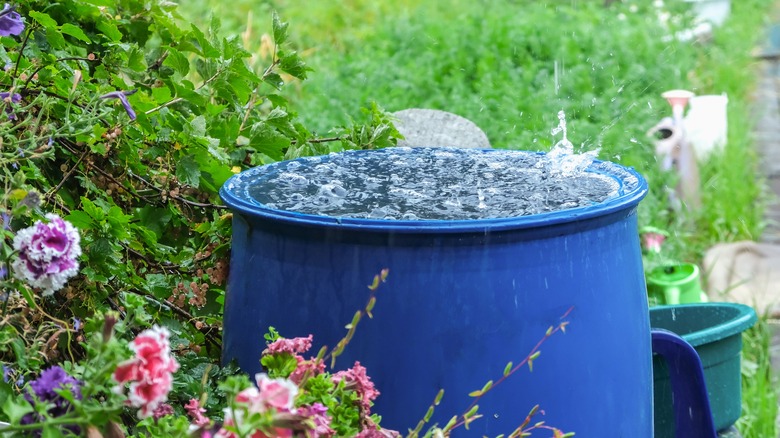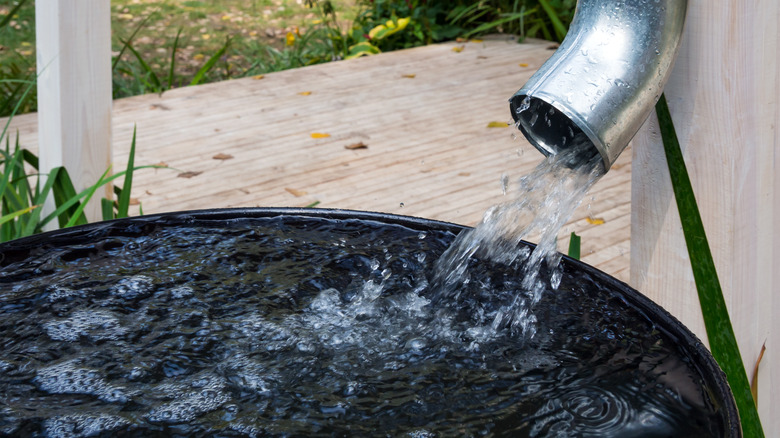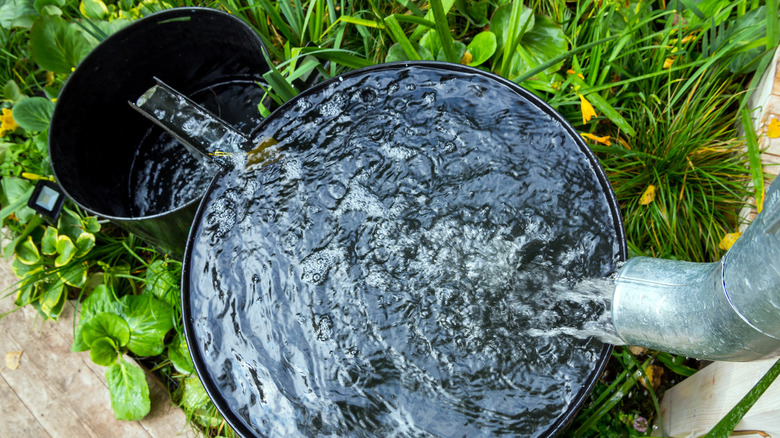Avoid These Common Mistakes When Using A Rain Barrel
Harvesting rainwater can be a viable way to water plants and conserve your water supply, but there are a few common mistakes you should avoid if you are using a rain barrel for the process. You can take full advantage of the benefits of using a rainwater barrel with a bit of careful planning. This can help you have a source of water when conditions are too dry or drought threatens your lawn and garden. It's also a great way to reduce your carbon footprint and protect the local watershed from excessive rain flow during the next storm.
You'll need to make a few careful decisions, including choosing the best rain barrel for your yard and ensuring the overflow is the right size. A significant rainstorm or a few days of rain could easily put your barrel at the very top, creating a risk for not just loss of that excess rainwater but also a stream of water pouring from your barrel into the surrounding area, causing potential erosion. It's easy to find a range of barrel options on the market, and you don't have to spend a lot of money on a professionally designed system, especially if you avoid these two common problems.
Choosing the right size rain barrel for harvesting
One common mistake is choosing the wrong size rain barrel. Rainwater harvesting certainly seems like a great way to reduce water demand, especially in areas that can suffer long dry spells. Choose a barrel that's large enough to accommodate the highest volume you'll most likely need. What would that be? It's hard to provide specifics since this will depend on many factors. If you have a 1,000-square-foot rooftop that you're harvesting rain from, and you get just a single inch of rain, you'll have about 622 gallons of water running off the roof into your barrel.
Choose the largest rain barrel for your budget (most average rainfalls are not a full inch within a day.) Typically, the residential rain barrels are about 50 to 90 gallons, and the large size offers a bit more protection. Larger is necessary in some situations. However, there's still the risk that your rain barrel will fill up. Since you don't want that water to come up over the top and down into your home's foundation, you'll need to make sure yours has an overflow lip. This is the portion of the barrel that covers the top slightly in an inward position and holds sloshing water in place. You'll want to choose an overflow that is the same width as your input pipe. That's going to provide enough protection to prevent most overflow from occurring.
Plan for overflow
The second mistake is not factoring in the risk of overflow. Even though you've purchased a big rain barrel with a large overflow, you still need to plan for what happens when that barrel fills up. Where is the water going to go if it does reach the top? When you don't have a plan for this, the overflow will cause a significant amount of water coming from your entire rooftop to strike at the base of the barrel, which is often right by your home's foundation. Even if it heads into the grass or your mulch, it's going to have enough impact to cause a risk of oversaturation.
While this process takes some more careful engineering, if you are DIYing a rain barrel system, you can set it up so that once the rain barrel reaches a certain height, any water above that point will flow downward away from your home. You could encourage it to flow to a ditch or ravine if one is present or set it up to go to a rain garden. The key is to ensure it goes somewhere it can easily drain without causing erosion to occur. Using rainwater when you have a system like this in place is well worth the work of setting up the rain barrel properly from the start.


